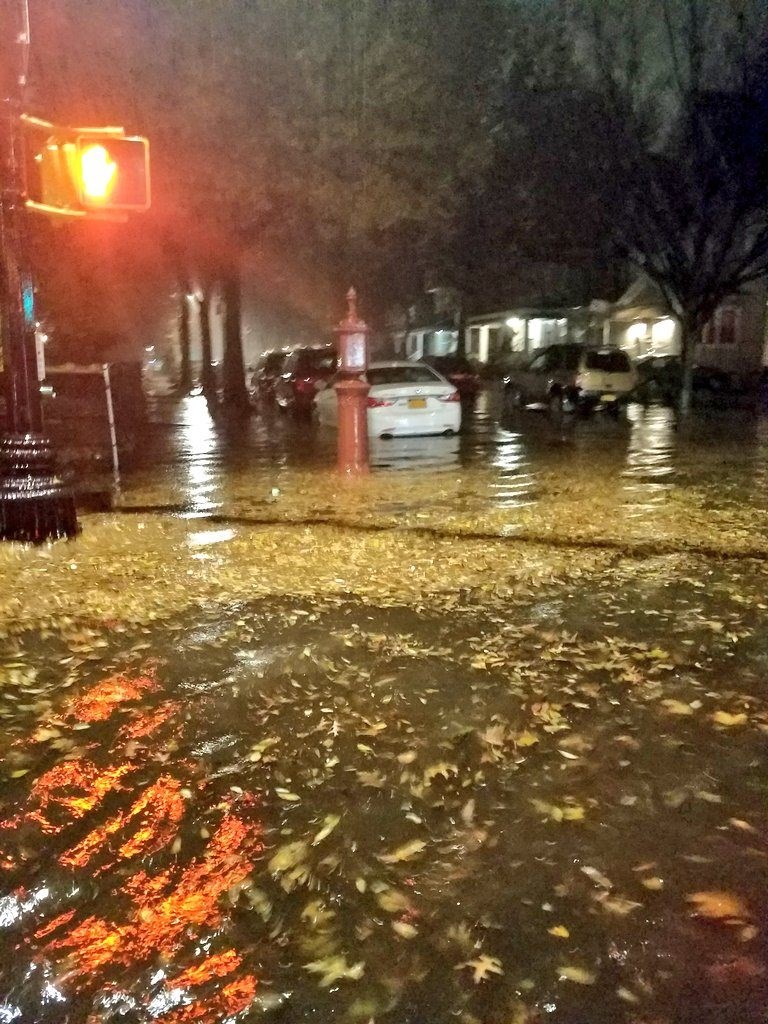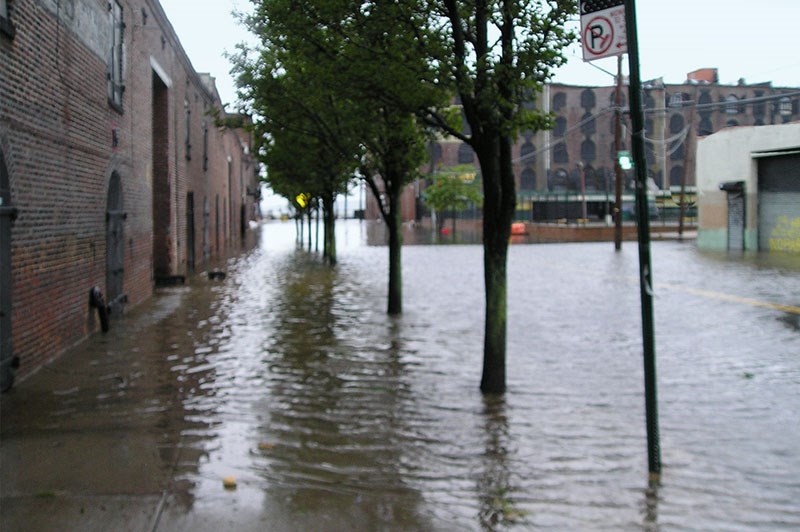Flatbush is among the city's 20 most flood-prone areas, according to a new analysis by real estate platform Localize.city, joining other Brooklyn neighborhoods like Coney Island, Borough Park and Gowanus.
The analysis, based on 311 calls collected from October 1, 2017, through September 30, 2018, found that New Yorkers issued 3,141 complaints about street flooding all across the city. It also revealed that the number of calls has increased by 53 percent over the last four years. The neighborhood with the most complaints is Manhattan's Marble Hill.
"The question remains: Is the rise in street flooding complaints attributed to more people complaining about the issue or worsening conditions from more frequent storms?" said Localize.city urban planner Olivia Jovine. "In general, the total number of flooding complains is correlated with rainfall, and 2018 has been a rainy year."

This year has been wetter than average, according to data from the National Weather Service. With last week's rainfall, 2018 moved into the top 10 wettest years for NYC The city's climate has been trending wetter in recent years: Five of the top 10 wettest years have occurred since 2000.
A recent example: The intense rainfalls over Thanksgiving weekend that turned Flatbush's streets into rivers and lakes, as Assemblywoman Rodneyse Bichotte documented on Twitter.
"We are under water! Heavy rain hits #Flatbush Victorian #DitmasPark, #SouthMidwood neighborhood. NYC Mayor's Office, FNDY, NYC DOT and NYC Sanitation, please help," tweeted Bichotte on November 25.
Jovine warns that New Yorkers need to prepare themselves for more storms and their aftereffects.
"New York City can expect an uptick in storm events that strain the city's infrastructure. And with rising sea levels, storm impacts will be exacerbated over the long term," Jovine said. "Many streets get flooded because the runoff can't be absorbed. Heavy rainfall often causes sewers to back up into people's homes, or flow into the city's rivers and bays, as polluted stormwater or untreated sewage gushes directly into the waterways before reaching sewage treatment facilities."
To see the full report, go here.




